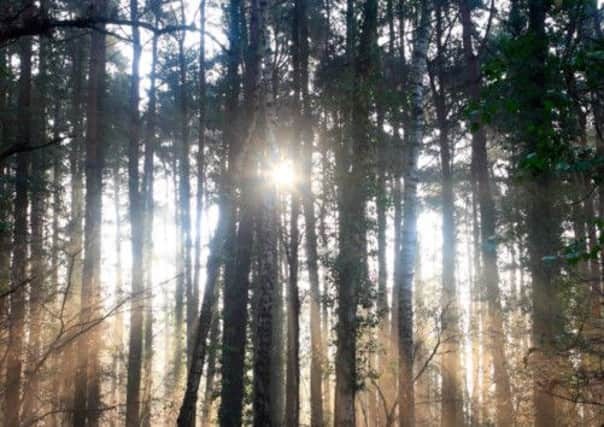Alan Simson: Woodlands must flourish in the urban sprawl


Maintaining – and ideally increasing – the amount of vegetation we have available to mitigate the effects of CO² should be a crucial part of our survival mechanism. We may have to re-think how we do this, however.
Researchers from Wageningen University and Research Centre in The Netherlands have concluded that forests in Europe are showing signs of reaching a saturation point in terms of being able to absorb CO².
Advertisement
Hide AdAdvertisement
Hide AdThey cite three main reasons for this – our trees are getting older, and are therefore less able to absorb CO²; urbanism is expanding and “natural disturbances”, such as wild fires, are increasing and thus producing yet more CO². There are a number of reasons for this.
First, as Wageningen suggest, much of our forests are getting on in years and, a bit like humans, get less active as they get older. Young, energetic and fast-growing trees are best for absorbing CO² – they need it to grow and develop.
There are also management issues. Commercial forestry traditionally has been managed on a “clear fell” system, ie you plant the trees [usually coniferous], they grow, you thin them a bit, they grow some more, you cut them all down and process them, and then re-plant, usually with the same species. The cycle varies in time-scale in the UK, but it is usually 40-60 years.
The general public tend not to like it very much, as a clear-felled area can look like a World War One battlefield for many years. Thus, there has been a trend over recent years for foresters to adopt a policy of “continuous-cover forestry”, whereby only small areas are felled, or sometimes just individual trees, and only small areas are re-planted.
Advertisement
Hide AdAdvertisement
Hide AdSecondly, while some urban areas in Europe are shrinking, many other parts of the world, are expanding and urbanising at an alarming rate.
We are increasing our urban areas in the world by an area the size of Berlin every four weeks.
In the UK, for example, the Government wants to build an additional 240,000 houses by 2016, and there is now an increasing cannon of research emerging that suggests that the concept of the “compact city” – a theme pursued in Europe for some 30 years or so on the grounds that it is a more sustainable way of developing – is not as sustainable as we thought.
If this sounds like a disaster movie in the making, take heart because there are things that can be done to improve the situation, and some of the research and discussions that Leeds Met are involved with are contributing to this.
Advertisement
Hide AdAdvertisement
Hide AdOne of the objectives that we have to pursue on our “dirty, crowded little island” as George Orwell so succinctly put it, is to bring forestry and agriculture back together again to create a form of agro-forestry.
The two land uses went their separate ways way back in the 19th century, unlike in some Euro pean countries, but the production of food and timber (a very sustainable material), together with crucial matters of ecology, amenity and carbon sequestration, have to be a metaphysic for us in the UK and we have to respond accordingly.
There will have to be other changes as well. Eighty per cent of the woodlands of the UK comprise only 10 species, and the advent of a raft of pests and diseases that have invaded our land – one of the latest being ash dieback disease – means that we have to greatly increase the resilience of our new woodlands and tree planting in general.
There is also the issue of creating areas of woodland close to where people actually live. As well as helping to create good and healthy places to live, love, work and play, urban trees can also assistwith providing a carbon sink.
Advertisement
Hide AdAdvertisement
Hide AdNow that we can put a realistic monetary value on the environmental, economic, financial, social and human health benefits of trees, they have ceased to be merely an urban cosmetic, something to soften the harder aspects of development, and are now a fundamental part of good urban design.
As usual, our friends on the mainland of Europe tend to be ahead of us on this, but we are catching up, and the mighty Boris Johnson, Mayor of London, is completely convinced!
As is often the case, Euro- discussions tend to take a long time, and these discussions are no exception, but it is essential that an agreement is reached, and it would be good if that could be concluded by early December to coincide with the second European Forestry Week. We have a duty not just to the current generations, but those still to come.
* Alan Simson is an urban foresty expert at Leeds Metropolitan University.